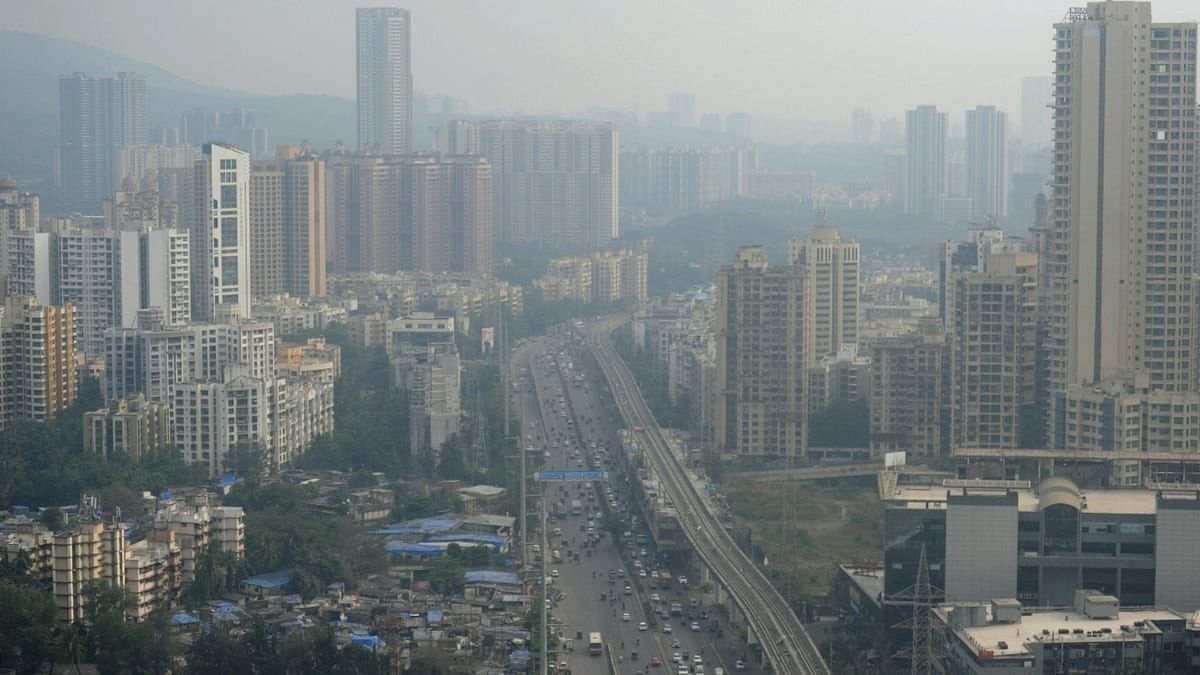
There are currently a total of 361 towers with over 40 floors in the entire MMR region, either already completed or slated for completion by 2030.
Credit: PTI Photo
Mumbai: India's financial capital of Mumbai and its suburbs are witnessing a never-seen-before vertical boom, with over 150 new highrises and skyscrapers coming up.
According to ANAROCK Property Consultants Pvt Ltd, the land-scare Mumbai Metropolitan Region (MMR) will see a 34 per cent growth in skyscrapers with over 40 floors over the next six years (2024-2030).
The MMR comprises the twin districts of Mumbai City and Mumbai Suburban, as well as parts of the neighbouring districts of Thane, Palghar and Raigad.
While other cities have lately shown a trend reversal, especially post-Covid-19, MMR's affinity for skyscrapers shows no signs of slowing down.
The region currently has 361 high-rise towers of over 40 floors each. Of these, 154 have already been completed and over 207 are scheduled to be completed between 2024 and 2030.
“Skyscrapers are synonymous with Mumbai’s real estate landscape, and increasingly define it. Apart from its extreme shortage of developable land, the city's towering urban aesthetic has become an apt symbol of its economic might. Between 2019 and 2023, 154 high-rises with 40+ floors hit the MMR market; between 2024 and 2030, 207 more will be completed. These projects have already been launched across the region,” said Anuj Puri, Chairman, ANAROCK Group.
Exponential population growth coupled with increased FSI limits over the last decade are among the main factors behind the 'rise' in the number of skyscrapers in the region.
In 2019, the state government gave Mumbai's beleaguered real estate market a major shot in the arm by reducing the FSI premium for all residential and commercial projects in the city for two years.
"Developers obviously welcomed this decision, as it reduced a significant input cost - the floor space premium - by up to 25 per cent for residential buildings," said Puri. "The decreased overall construction cost, coupled with high demand, prompted developers to launch more high-rises.”
The development of high-rises also helps decongest the city. Skyscrapers include amenities and residences in a single vertical space, thereby reducing residents' need to leave the premises for leisurely pursuits. Apart from thereby easing traffic congestion, these buildings also tend to trigger significant infrastructure developments around them, including better roads and improved public transport facilities.
There are currently a total of 361 towers with over 40 floors in the entire MMR region, either already completed or slated for completion by 2030. Of these, areas in South Central Mumbai boast of the maximum number – about 103 towers, or 29 per cent of the overall share. Of these, at least 61 towers are completed and another 42 will be completed within the 2024-2030 period.